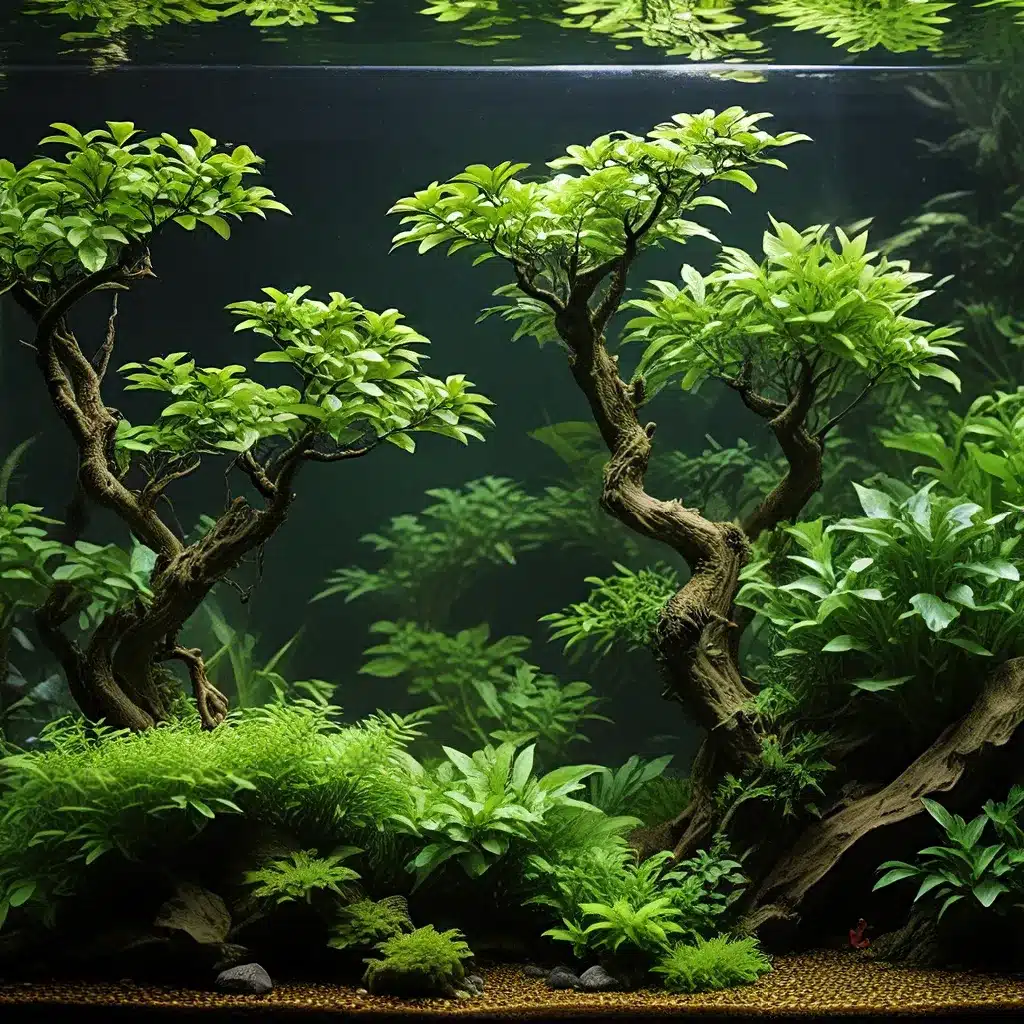
Unlocking the Secrets of Aquarium Plant Care
Maintaining a thriving aquarium with lush, healthy plants is the dream of many hobbyists. King Aquarium understands this passion, and we’re here to share our expertise on pruning and trimming aquarium plants for optimal growth and appearance.
The Importance of Proper Pruning
Aquarium plants, much like their terrestrial counterparts, require regular pruning and trimming to remain healthy and visually appealing. Proper maintenance is crucial for several reasons:
-
Encourages Bushier Growth: By selectively removing overgrown or older leaves and stems, you stimulate the plant to produce more compact, bushy growth, creating a fuller, more attractive aquascape.
-
Prevents Overcrowding: Left unchecked, aquarium plants can quickly become overgrown, competing for limited space and resources. Pruning helps maintain the delicate balance of your planted tank, ensuring each species has the room it needs to thrive.
-
Improves Water Quality: As plants shed older leaves and die back, they release organic matter into the water, contributing to a buildup of waste and potential algae issues. Regular pruning minimizes this by removing excess plant material before it decomposes.
-
Enhances Aesthetics: A well-trimmed, vibrant aquarium is a true sight to behold. Proper plant maintenance keeps your underwater garden looking neat, tidy, and visually captivating.
Identifying the Right Time to Prune
Knowing when to prune your aquarium plants is just as important as the pruning itself. There are a few key indicators to watch for:
-
Rapid Growth: If your plants are growing at an exponential rate, it’s likely time to give them a trim. This is especially true for fast-growing species like Java Moss, Cryptocoryne, or Hygrophila.
-
Older, Discolored Leaves: As plants mature, their lower leaves often become yellowed, brown, or otherwise discolored. Removing these older, less vibrant leaves encourages new, healthy growth.
-
Overcrowding: If your plants are starting to crowd each other out, reducing light penetration and water flow, it’s a clear sign that pruning is necessary.
-
Seasonal Changes: Some aquarium plants may experience periods of more rapid growth during certain times of the year. Monitor your tank closely and adjust your pruning schedule accordingly.
Techniques for Effective Pruning
Now that you understand the importance of pruning and when to do it, let’s dive into the techniques that will keep your aquarium plants looking their best:
Trimming Stem Plants: For stem plants like Rotala, Ludwigia, or Hygrophila, use sharp, clean scissors to snip off the top portions, leaving a few inches of the lower stem intact. This encourages bushy, compact growth and prevents the plants from becoming leggy.
Thinning Rosette Plants: For rosette plants like Cryptocoryne or Anubias, gently remove older, discolored leaves by hand or with tweezers. This maintains a neat, organized appearance and allows new, vibrant leaves to emerge.
Controlling Runners and Stolons: Some aquarium plants, such as Dwarf Sag or Microsword, spread via runners and stolons. Regularly trim or remove these to prevent them from overtaking the tank.
Pruning Floating Plants: Floating plants like Water Lettuce or Frogbit may require more frequent pruning to maintain their shape and prevent them from covering the entire water surface.
Maintaining Carpeting Plants: For low-growing, carpet-forming plants like Dwarf Baby Tears or Glossostigma, use a pair of sharp scissors to trim the tops, encouraging lateral growth and an even, lush appearance.
Timing Your Pruning Routine
The frequency of your pruning routine will depend on the specific plants in your aquarium and their growth rates. As a general guideline:
- Fast-growing stem plants: Prune every 2-4 weeks
- Rosette and carpeting plants: Prune every 4-8 weeks
- Floating plants: Prune every 1-2 weeks
It’s also important to consider the overall health and balance of your aquarium ecosystem. If you notice signs of nutrient deficiencies, excessive algae growth, or other imbalances, you may need to adjust your pruning schedule accordingly.
Maintaining Aquarium Health Through Proper Disposal
When pruning your aquarium plants, proper disposal of the trimmings is crucial to maintaining a healthy, balanced system. Avoid simply tossing the clippings back into the tank, as this can lead to a buildup of organic matter and potential water quality issues.
Instead, remove the plant material from the aquarium and dispose of it outside the tank. This helps prevent the release of excess nutrients, which can fuel algae growth, and ensures that any potential pests or diseases don’t spread to the remaining plants.
Conclusion
Pruning and trimming your aquarium plants is an essential part of maintaining a thriving, visually stunning underwater garden. By understanding the importance of proper plant care, recognizing the right time to prune, and employing effective techniques, you can unlock the secrets to aquascaping perfection.
Remember, King Aquarium is here to support you on your journey. Explore our wide selection of aquarium plants, tools, and resources to help you create the aquarium of your dreams. Happy pruning!

